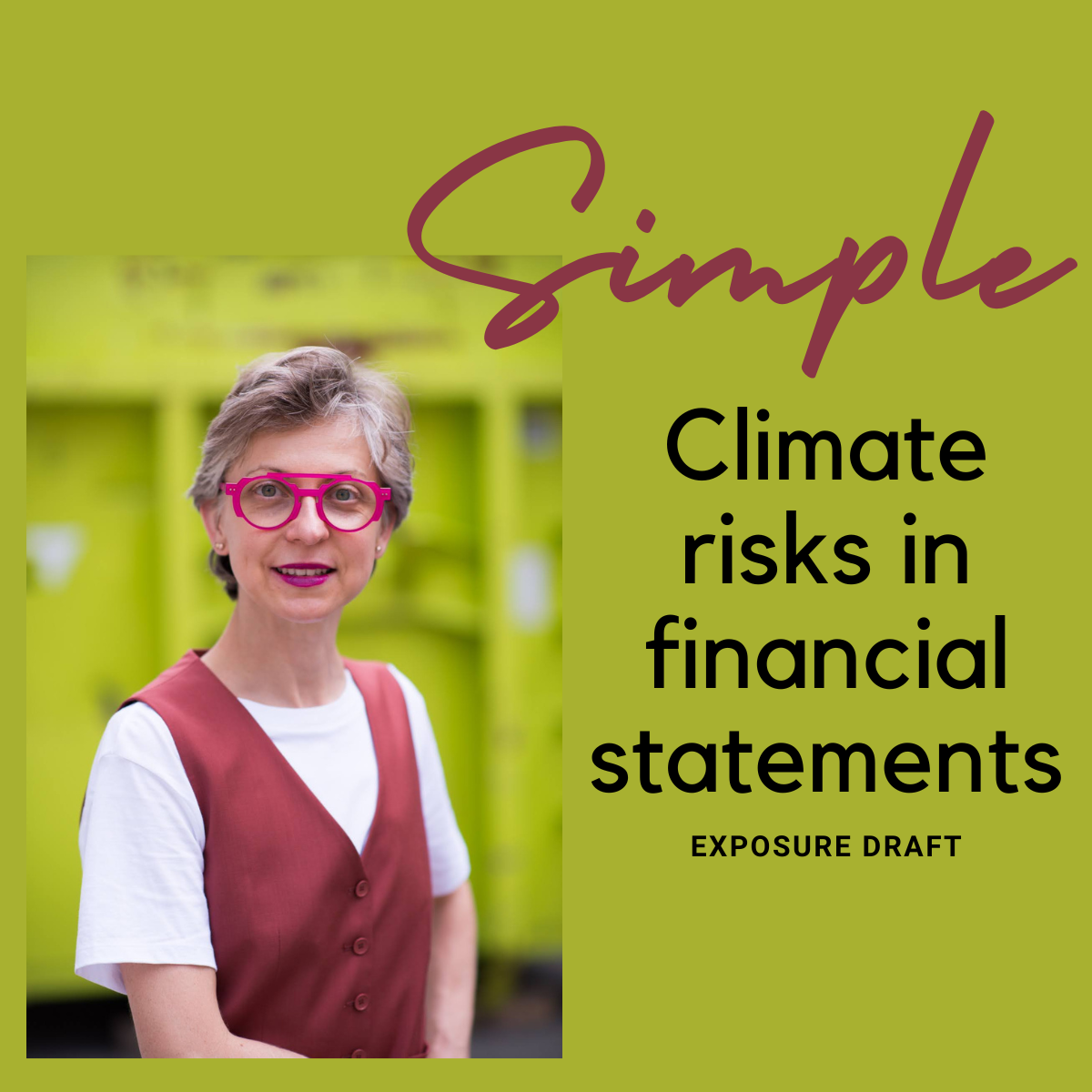Exposure Draft: Climate-related and Other Uncertainties in the Financial Statements
Climate Risks
"Individual choices won`t be enough to save the planet". (TIME)
IASB has published the Exposure Draft "Climate-related and Other Uncertainties in the Financial Statements."
Here are my takeaways to simplify your financial reporting life:
1️⃣ Firstly, know your apples (structure is the key).
This Exposure Draft is an accompanying material for the IFRS Accounting Standards.
There is a separate set of standards focusing on sustainability-> the IFRS Sustainability Standards.
The Exposure Draft extends the IFRS Accounting Standards not the IFRS Sustainability Standards.
This might feel like the topic of sustainability flows from all directions to all reports.
As a result, it may take a minute to get the orientation right.
Wrap up: New climate risk disclosures for IFRS Accounting Standards, despite being topically related to IFRS Sustainability Standards.
Easy 😊?
2️⃣ Secondly, know what the Draft is about:
It contains 8 examples on climate-related and other risk disclosures in financial statements.
Remark: “other risks” are not described further and shall be explained or omitted altogether.
The Draft does not illustrate any climate-related opportunities - assumingly - to remain prudent.
Examples shall be read with these standards:
· IFRS 18 Presentation and Disclosure in Financial Statements/ IAS 1 – effective from 1.1.2027 - 4 examples.
· IAS 36 Impairment of Assets – currently in an improvement/ project phase - got 1 illustrative example.
· IFRS 7 Financial Instruments: Disclosures and IAS 37 Provisions, Contingent Liabilities and Contingent Assets - got 1 example each.
3️⃣ Thirdly, let`s have a look at the Examples 1 and 2:
A manufacturer / capital-intensive industry/ high climate-related risks / transition plan into green energy underway.
AND
A service provider/ limited climate risk exposure.
Both - the manufacturer and the service provider - shall answer the following question:
Do our financial statements:
- enable their users
- to understand the effect of transactions/ events and conditions (incl. climate risks)
- on our financial position and financial performance?
OR
are any additional disclosures necessary?
The decision is made based on:
✔ qualitative and quantitative materiality considerations
and,
✔ by assessing the provisions of other standards (e.g. IAS 16 Property, Plant and Equipment).
While the manufacturer concludes "yes" and adds additional disclosures, the service provider ends up with no additional disclosures.
An important note:
Both preparers disclose climate-related topics in general purpose financial reports, OUTSIDE the financial statements.
That leads me to a question: how much climate-relate disclosures is too much? 🤔
